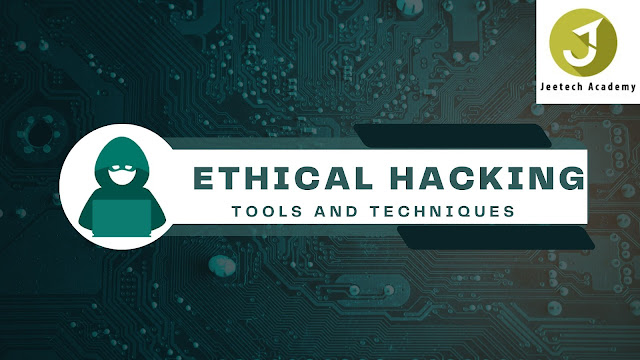Ethical Hacking Tools and Techniques
In today's rapidly evolving digital landscape, cybersecurity is of paramount importance. As technology advances, so do the methods employed by cybercriminals. To combat these threats and ensure the safety of digital systems, ethical hacking has emerged as a vital practice. Ethical hackers, also known as white hat hackers, use their skills to identify vulnerabilities in computer systems before malicious actors can exploit them. In this article, we'll delve into the world of ethical hacking tools and techniques, understanding their significance in maintaining a secure online environment.
What is Ethical Hacking?
Ethical hacking, often referred to as "white hat" hacking, is a practice where skilled cybersecurity professionals, known as ethical hackers, intentionally and legally exploit vulnerabilities in computer systems, networks, applications, and other digital assets. The purpose of ethical hacking is to identify security weaknesses that malicious hackers, or "black hat" hackers, could potentially exploit for unauthorized access, data breaches, or other malicious activities.
Ethical Hacking Tools
Ethical hacking involves using tools and techniques to identify vulnerabilities in computer systems, networks, and applications. These tools are meant to be used by security professionals and ethical hackers to ensure the security of systems and protect against malicious attacks. Here are some commonly used ethical hacking tools:
Nmap: Network Mapper is a powerful open-source tool used for network discovery and security auditing. It helps in identifying open ports, services, and potential vulnerabilities on a network.
Metasploit: This is a penetration testing framework that helps security professionals identify and exploit vulnerabilities in systems. It can also be used for creating custom exploits.
Wireshark: A widely-used network protocol analyzer that allows you to capture and inspect the data traveling back and forth on a network in real-time. It's useful for diagnosing network issues and detecting malicious activities.
Burp Suite: This is a comprehensive web vulnerability scanner used for testing web applications. It can identify various types of vulnerabilities like SQL injection, cross-site scripting (XSS), and more.
Nessus: A vulnerability assessment tool that scans networks for potential security issues and provides detailed reports on identified vulnerabilities.
Aircrack-ng: A suite of tools used for assessing WiFi network security. It includes tools for capturing packets, testing network encryption, and conducting various wireless attacks.
John the Ripper: A password cracking tool that is used to identify weak passwords by attempting to crack password hashes using various techniques.
OWASP Zap: The OWASP Zed Attack Proxy is a popular open-source tool for finding security vulnerabilities in web applications during the development and testing phases.
Sqlmap: This tool automates the process of detecting and exploiting SQL injection vulnerabilities in database-driven web applications.
Hydra: A fast and flexible password-cracking tool that supports a variety of protocols and services, making it useful for testing weak passwords on various services.
Gobuster: A tool for directory and file brute-forcing on web servers, helping to discover hidden resources that might be vulnerable.
Dirb: Similar to Gobuster, Dirb is used to discover hidden directories and files on web servers.
Ethical Hacking Techniques
Ethical hacking, also known as penetration testing or white-hat hacking, involves the authorized and controlled attempt to identify vulnerabilities in computer systems, networks, applications, and other technological assets. The goal of ethical hacking is to uncover potential security weaknesses before malicious hackers can exploit them, thereby enhancing the overall security posture of an organization. Here are some common ethical hacking techniques:
Vulnerability Scanning: This involves using automated tools to scan networks, systems, and applications for known vulnerabilities. These tools identify weak points that could potentially be exploited by attackers.
Penetration Testing: This is a more in-depth approach where skilled ethical hackers simulate real-world attacks to identify vulnerabilities and assess the effectiveness of an organization's defense mechanisms.
Social Engineering: Ethical hackers may employ social engineering techniques to manipulate individuals into revealing sensitive information, such as passwords or access credentials. This helps organizations identify potential weaknesses in their human security layer.
Phishing: Similar to social engineering, phishing involves sending deceptive emails or messages that appear legitimate to trick recipients into clicking on malicious links or providing confidential information.
Password Cracking: Ethical hackers may attempt to crack passwords to assess the strength of an organization's password policies. This helps identify weak or easily guessable passwords.
Network Sniffing: This technique involves capturing and analyzing network traffic to identify vulnerabilities or potential security breaches. It helps in understanding how data flows within a network.
Web Application Testing: Ethical hackers assess the security of web applications by attempting to exploit vulnerabilities like SQL injection, cross-site scripting (XSS), and other code-related weaknesses.
Wireless Network Testing: Ethical hackers may attempt to breach wireless networks to identify security flaws and ensure that proper encryption and security protocols are in place.
Physical Security Testing: This involves attempting to physically breach an organization's premises to assess how well physical security measures (locks, access control, etc.) are functioning.
Exploitation: In controlled environments, ethical hackers may attempt to exploit identified vulnerabilities to demonstrate their potential impact and help organizations understand the risks associated with them.
Post-Exploitation Analysis: After successful exploitation, ethical hackers analyze the compromised system to determine the extent of damage that could occur in a real attack.
Security Assessment: This encompasses an overall evaluation of an organization's security measures, policies, and practices, identifying gaps and recommending improvements.
Conclusion
Ethical hacking is a cornerstone of modern cybersecurity, acting as a proactive defense against the relentless tide of cyberattacks. By identifying vulnerabilities before malicious hackers do, ethical hackers contribute to a safer digital environment.


.jpg)
Thank you for sharing this insightful post on the types of hackers. Your explanation of white, black, and grey hat hackers, along with their roles, was clear and informative. It’s fascinating to understand how each type contributes differently to the cybersecurity landscape. Your effort in breaking down this com.plex topic for readers is much appreciated. Looking forward to more valuable content from you! Find ethical hackers for hire online by the professional cyber experts.
ReplyDelete